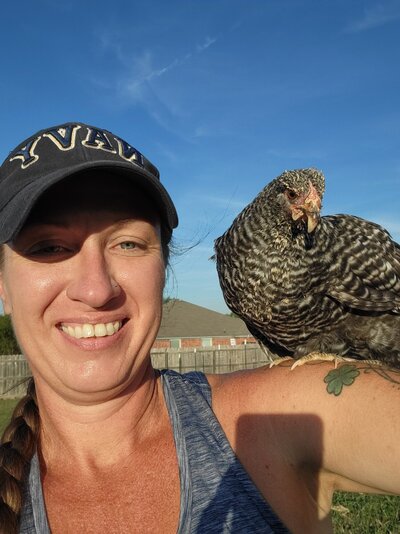Missys Chicken Ranch
Songster
I have been wetting my chickens crumble and my Roxie girl seems to be eating it ok. She is about the same size as her sister so that is good. I worry about her face. she gets it everywhere and it gets hard and crusty. My question is, anyone that has a scissor beak, how do you clean their faces after they eat? My girl has a really bad beak and I try to wipe off or pick off as much of it as she will let me. I am afraid I will hurt her. Any suggestions on how to get it off her face?
Thanks ya'll!
Thanks ya'll!


